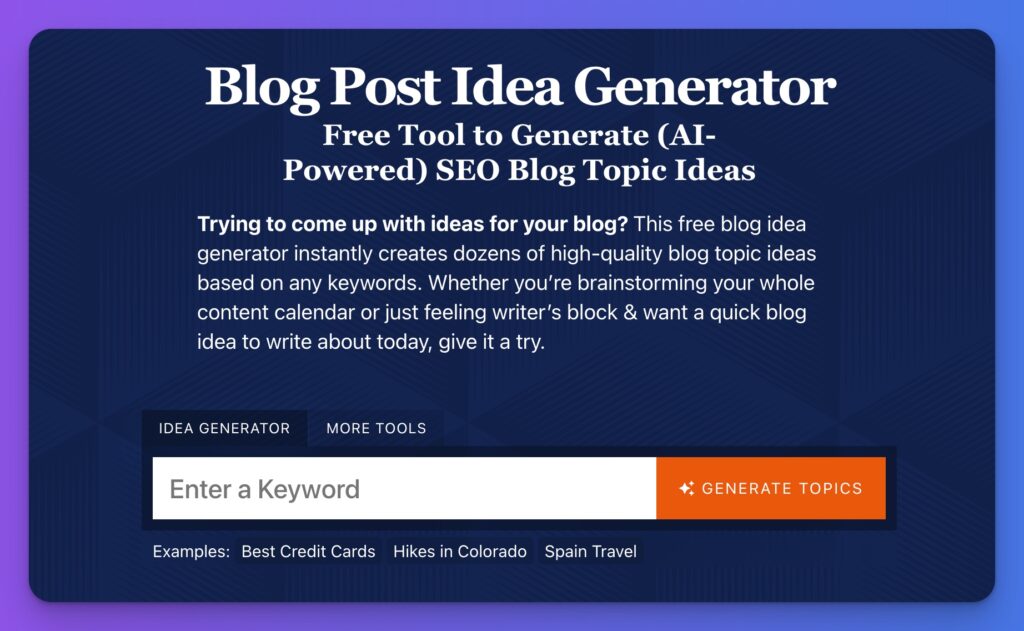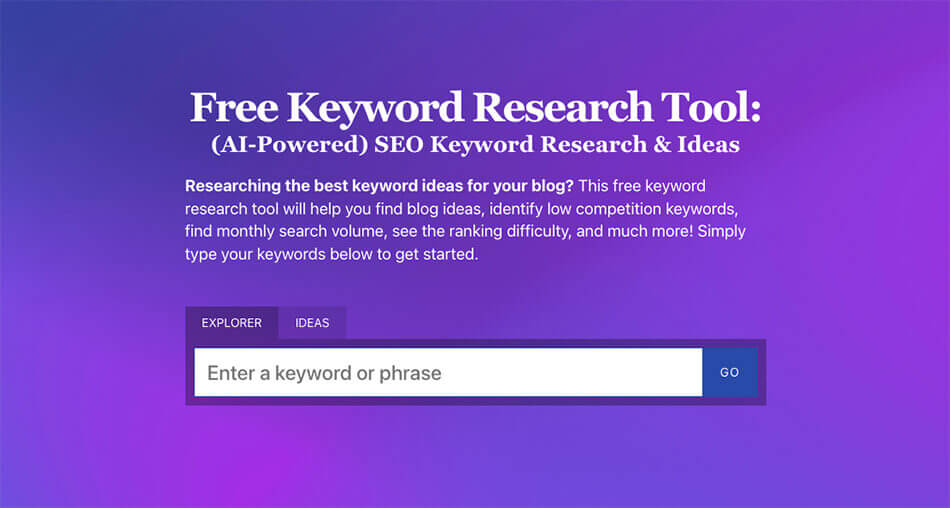One thing that stumps many new bloggers is figuring out how to create a blog link. And trust me, I get it. There’s a lot to learn, especially when you’re figuring out how to use WordPress for the first time.
Whether you’re trying to figure out how to get the link to a specific post on your blog or you want to add a link from one post to another, linking to posts can be a little confusing when you’re brand new to blogging.
Fear not, my friend. I’m going to take you through everything you need to know about what blog links are—and how to create links when you’re writing blog content.
You may have also heard terms like permalink, hyperlink, backlink, and internal link. Don’t worry if those sound confusing: we’re going to simplify and explain them all throughout this guide. 🙂
We’ll take everything step by step, and if you get stuck or have questions, just leave a comment here at the end of this post and I’ll be glad to chime in.
What is a Blog Link (Permalink)? How to Create Links on Your Blog
- What is a Blog Link (Permalink)?
- Best Practices for Creating Your Blog Post Links
- How to Link to One Blog Post From Another
- FAQs About Blog Links and Permalinks
Disclosure: Please note that some of the links below are affiliate links and at no additional cost to you, I’ll earn a commission. Know that I only recommend products and services I’ve personally used and stand behind. When you use one of my affiliate links, the company compensates me, which helps me run this blog and keep my in-depth content free of charge for readers (like you).
Try My Free AI-Powered Blog Idea Generator Tool

Writer’s block can be a real pain. Trust me, I know. That’s why I built this forever free blog post idea generator tool, powered by AI. In seconds, you can generate endless ideas for your next blog posts.
What is a Blog Link (Permalink)?
A blog link (sometimes called a permalink) is a URL that links to a specific blog post.
Here’s an example:
- My homepage is ryrob.com
- A link to one specific post on my blog is ryrob.com/how-start-blog
You can see that link here in the browser’s address bar:

Tip: “Link” is short for “hyperlink”. These days, most people just say “link”. Both words mean the same thing.
When your blog is brand new, you might only have 1 or 2 posts. It’s easy to just tell people, “Check out my latest post” and send them to your homepage.
But that doesn’t work when you have 10 posts, or 20, or 100. Your homepage likely only shows a few of your most recent posts, or perhaps a list of your most popular posts.
That’s where permalinks come in. A permalink permanently links to your blog post. Someone can visit that link today, or next year, and they’ll get your post.
- If someone finds your post through a Google search, the link they visit is that permalink—not your blog’s home page.
- If someone shares your post on social media, the link they share is the permalink.
- If you want to share your post with your email list, the link you send them is the permalink, so you can drive traffic straight to that post.
That means that your permalink is important. Sometimes, people will just see the title of your post (as a clickable link). But sometimes, they’ll see the actual URL for the post, so you want it to make sense.
Which leads me on to…
Best Practices for Creating Your Blog Post Links
Don’t Change Permalinks After Creating Them
After a post or page is published, the permalink for that page shouldn’t be changed unless you really need to.
If you change the permalink, any incoming links to that post or page from other websites, will suddenly be pointing to a missing URL instead of a piece of content.
If you do need to change a permalink at some point on your blog, it’s crucial that you set up a 301 redirect to tell search engines (like Google) that the old url of your web page, post, or article has now moved to the new permalink you’ve set up.
This means you’ll still get traffic to that post from the old link. It’s especially important to set up permalinks if you’re moving a lot of posts to new URLs, so Google won’t penalize your website for having a high number of broken links.
Do Use Keywords in Your Permalinks
If you’ve started your blog using WordPress, the CMS that powers more than 40% of sites on the Internet, then making SEO-friendly permalinks is easy.
By default, WordPress uses your post’s title for the permalink. You can check this under Settings→Permalinks, where you’ll see a number of options.

To create SEO-friendly permalinks for your blog post links, you should always use the default permalinks structure of Post name as the starting point.
Tip: If you have a news site, it may make sense to pick one of the options that also includes the date in the permalink. That way, readers can easily tell new posts from old ones, just by glancing at the URL.
If you’ve learned how to write a blog post that begins with an SEO-friendly headline (title), then the default link to your post will naturally include your keyword.
Editing the Permalink to a Post
When writing a post, you can change the permalink under the Post→Summary→URL settings:

To change the URL, simply click on it and type in a different last part, separating words using hyphens. Make sure you keep your primary keyword in there.

Here are a few examples of how SEO-friendly headlines translate into SEO-friendly permalinks:
- How to Start a Blog (and Make Money) — https://www.ryrob.com/how-start-blog/
- How to Make Money Blogging — https://www.ryrob.com/make-money-blogging/
- 203 Best Blog Post Ideas — https://www.ryrob.com/blog-post-ideas/
Use My Free Keyword Research Tool

Try my free AI-Powered Keyword Tool to get dozens of research-backed ideas for keywords & topics to write about on your blog today.
Don’t Just Use the Default URL (Permalink)
While it’s tempting to settle with the default URL, you’ll normally want to make some edits before you hit “Publish”.
If you noticed in my three example blog post titles & corresponding permalink examples from above… the permalinks for those articles don’t include every single word from the title.
For the permalink, I’ve omitted short and non-essential words like “to” and “a” so that they don’t make it into the URL and make it unnecessarily long.
To create SEO-friendly permalinks, you should usually delete these kinds of words from the URL before publishing your article:
- Conjunctions (for, and, nor, but, or, yet, and so)
- Prepositions (words like to, of, with, at, from, into, for, on, by, and so on…)
When using SEO tools you may notice these are called “stop words”.
In general, the shorter your permalink is, the more memorable it’ll be for readers and the easier it is for search engines to understand.
It’s important to include your target keyword phrase in the permalink for your post or page, and any crucial operative words like “how” or “why” that indicate how you’re tackling the topic.
How to Link to One Blog Post From Another (Step-by-Step Guide)
Often, you’ll want to link from one of your blog posts to another post. This type of link is called an internal link because it goes to another page on your own website. (If you were linking to someone else’s post on a different site, that would be an external link.)
Creating a link in WordPress is really easy—but if you’re new to blogging, you might be a bit unsure how to do it.
One method that some bloggers use is to simply paste their chosen URL into the text of their post, like this:

WordPress will automatically turn that into a clickable link.
But there are a couple of problems with this method:
- If you’re using the block editor (Gutenberg editor), WordPress will automatically try to embed content that you paste in as a link. You’ll need to manually convert that Embed block to a Paragraph block for your link to display like above.
- Having a URL written out like this can make your post look a bit untidy. It doesn’t give the most polished or professional impression.
A better way to link from one blog post to another is to use anchor text for your link. This makes for a better user experience.
Anchor text is the word, phrase, or sentence that you’re going to turn into a clickable link. Your link is “anchored” to those words.
It’s really simple to create this type of link in WordPress. Just type your sentence, then highlight the words that you want to use for your anchor text.
Then, click the link symbol that appears:

You’ll now see a box that lets you search for a post on your blog. Just start writing the title of your post and it should appear:

Just click on the title of your post and WordPress will automatically insert the link, attached to your highlighted anchor text.
Alternatively, instead of searching for the post, you can paste the URL into that box.

When adding a link, you can set it to open in a new tab. This can be useful for external links (links to other sites) so that readers don’t lose their place on your site.
To change a link, just click on it and use the “edit” or “remove link” button as appropriate:

It’s always a good idea to look for at least a couple of opportunities to include internal links in each post you write: this can help you get much better results from your content marketing. You might link to:
- A beginner’s guide that helps readers get up to speed with the basics
- A case study that further illustrates a point you’re making in the post
- More in-depth content relating to the topic
- An episode of your podcast
- Something you sell in your e-commerce store that’s relevant to your post (in this case, your link is a call to action)
Of course, you can and should include external links where appropriate too. You could link to:
- A post that you really enjoyed on another blogger’s site, which you think your target audience will enjoy too
- Content from influencers or high authority websites, perhaps as part of an outreach strategy
- A Wikipedia explanation or definition for a concept you’re discussing in brief
- A useful tool or template that helps readers with a concept in your post
Don’t forget to save your post after making any changes.
FAQs About Blog Links and Permalinks
Here are some of the most common questions that new bloggers have about blog links and permalinks. If your question isn’t covered here, just ask it in the comments below and I’ll be glad to help.
What is a Blog Link? (Blog Link Example)
A blog link is the URL to a blog post (or to a landing page on your blog). The URL doesn’t change, even if you update the post.
Here’s an example: https://www.website.com/this-is-a-permalink-example/
WordPress automatically puts letters in lowercase in URLs and replaces spaces with dashes.
What Does a Blog Link Look Like in HTML?
With modern blogging software, you won’t usually need to edit any HTML code. But if you’re curious, here’s how a link looks in HTML:
<a href=”https://ryrob.com/how-start-blog”>How to Start a Blog</a>
The a tag creates the link and wraps around the anchor text. The “href” part of the tag stands for “hypertext reference” and gives the URL of the link.
How Do I Edit My Permalink Settings?
Creating a permalink will depend entirely on what content management system (CMS) you’re using. If you’re reading this post, you most likely have a WordPress website. Of course there are plenty of other blogging platforms so I’ve included instructions on where you can make permalink adjustments on a few other common platforms.
- WordPress: As displayed above, a properly setup WordPress site should have permalinks enabled by default. You can view permalink settings in WordPress by going to Settings > Permalinks. This page in the WordPress dashboard will show you options for changing your permalink structure. You don’t need any fancy WordPress plugins to manage your blog links.
- Wix: You’ll find permalink options in Wix under the SEO basics menu when editing content.
- Squarespace: Permalinks in Squarespace are called slugs and they’re easy to change using their admin interface.
- Drupal: If you’re using Drupal you’ll likely use autopath to generate SEO friendly permalinks. Pathauto module generates a URL/path alias using your taxonomy and node title automatically.
How Do I Find Links to My Blog?
Having links to your blog is a really important part of SEO (search engine optimization) as it can help your blog’s content to appear higher up the search rankings. You can get some insights into what blogs are linking to yours by using my free Backlink Checker.
You can also use Google Search Console to find your backlinks, under Links→External links.
Don’t have many links yet? Create some high-quality content that other bloggers will want to link to, and write guest posts for bigger blogs in your niche to start generating some inbound links (backlinks) from other sites.
These tactics are known as link building strategies (where you work to attract high quality links) and they’ll help boost your overall blog traffic & other key metrics by building authority from the sites that link to you. Just avoid pitching spammy websites, as they’ll do more harm than good to your overall blog SEO efforts.
How Do I Create a Blog URL?
If you haven’t set up your blog yet and you want to create a URL for the blog itself, that’s usually called a domain name. For instance, ryrob.com is my site’s domain name.
You can register a domain name with a domain registrar or with your web hosting company. Even better, you can find the perfect domain name using my free domain name generator.
Many web hosting companies, including my favorite hosts Bluehost and Dreamhost, offer a free domain name when you sign up for a year or more of hosting.
Ready to Start Adding Links to Your Blog?
Hopefully, you’re now feeling a lot clearer about what blog links are and how to use them. If you’re struggling at all, do drop a comment below and I’ll be glad to help—especially if you’re setting up a new blog and want a little extra guidance.
If your blog isn’t yet online, then don’t worry: I’ve got a really easy How to Start Your Blog tutorial to help. It’ll only take you 10–15 minutes, too.
If your blog is up and running but you don’t have much content to link to, then head on over to my list of 203+ blog post ideas and pick something to write about.
Try My Free AI-Powered Blog Idea Generator Tool

Writer’s block can be a real pain. Trust me, I know. That’s why I built this forever free blog post idea generator tool, powered by AI. In seconds, you can generate endless ideas for your next blog posts.

Thanks for suggestions on how to make blog links.
This is a really useful article, how to build backlinks to websites through blog posting. Thank you
The visuals and graphics you include in your blog posts enhance the overall experience. It’s a feast for the eyes and the mind.”
A blog link, or permalink, is the digital address assigned to a particular blog post, ensuring a persistent and accessible location on the web. This unique URL is designed to remain unchanged, allowing users to bookmark, share, or reference a specific post with a simple and consistent web address. The term “permalink” is derived from “permanent link,” emphasizing its stability and endurance over time. Unlike dynamic URLs that might change based on website structure or updates, permalinks remain constant, providing a reliable means for readers and search engines to locate and reference specific blog content.
You write very informative blog I like it very much.